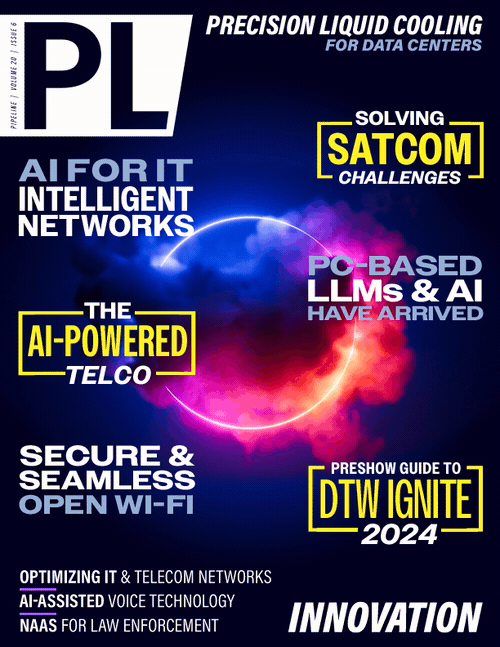Liquid Cooling: The Winning Solution
for Data Centers
Emergence of Precision Liquid Cooling
Precision Liquid Cooling (PLC) is gaining traction for its unique approach to cooling HPC systems while eliminating the need for specialized maintenance and complex equipment. PLC technology uses a dielectric liquid coolant delivered directly to the hottest components of the server. This approach allows for more precise temperature control and efficient heat removal, which results in higher performance and lower energy consumption, enabling more computing power in a smaller footprint.
Unlike traditional air cooling, where fans dissipate heat, PLC involves direct contact between the liquid coolant and CPUs and GPUs within the hardware. The ability to provide precise, targeted cooling exactly where it's needed most ensures no over cooling of less heat-intensive parts and offers significant sustainability benefits as energy consumption can be reduced by 40 percent and water consumption by 96 percent.
These solutions are also purpose-built to withstand harsh IT environments. With no server fans required, component failures are reduced by 30 percent. Dielectric fluid also reduces thermal stress, and the enclosed chassis makes the units impervious to gases, dust, and humidity. This extends the server lifecycle and lowers maintenance costs. Unlike air-cooled infrastructure, Precision Liquid Cooling does not require rack depopulation at higher densities, enabling the racks to run fully populated to facilitate more servers and storage devices, and/or denser IT loads.
A recent study by STL Partners further shined a light on the cost benefits of effective edge sustainability strategies, including PLC. The report finds that advanced edge sustainability strategies can reduce telco providers energy usage by 3-5 percent and the equivalent of one million tons of carbon dioxide (tCO2eq) emissions for a typical large group operator. These strategies, which include PLC, could save a typical large group telco operator up to $40 million a year in energy costs.
Future Outlook and Predictions
Due to its benefits, the future of liquid cooling is bright. A Dell’Oro Group Study predicts liquid cooling will jump from 5 percent of the data center thermal management market to 19 percent by 2026.
As the data center operations community seeks cooling innovations that push the limits of what’s possible with alternative solutions, such as Precision Liquid Cooling, the industry will make notable strides toward the more sustainable and efficient future it desires, as long as operators are not afraid to embrace change.
Adopting sustainable practices and investing in new technologies offers benefits beyond carbon reduction; it fosters client attraction and retention strategies for data centers. This requires a broader conversation internally between all the stakeholders of the business to fully incorporate and maximize liquid cooling’s benefits.
Altogether, as organizations continue their move to the edge, we’ll continue to see efficient, high-performance solutions like liquid-cooled servers rise to meet the unique challenges at the edge. By leveraging innovative rack designs and emerging technologies such as Precision Liquid Cooling, which addresses several edge deployment pain points in one fell swoop, organizations can build scalable, efficient, and resilient edge computing infrastructure to drive digital transformation and unlock new opportunities for growth and innovation.


















